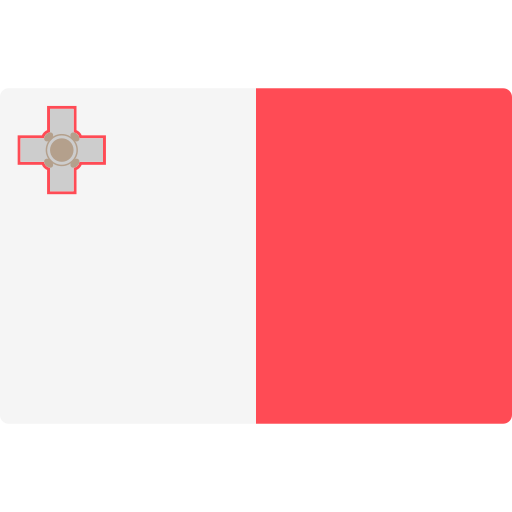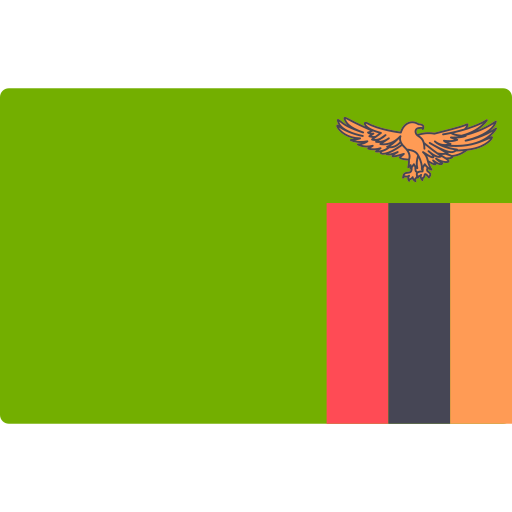Interview by Jennifer Walden, photos courtesy of Lionsgate Films
Supervising sound editor/sound designer/re-recording mixer Jeremy Peirson reunited with director Francis Lawrence for the newest film to The Hunger Games franchise, the prequel The Ballad of Songbirds & Snakes. The pair have worked together on the three previous franchise releases: Catching Fire, Mockingjay Part 1 and Mockingjay Part 2. Their collective knowledge of those films was beneficial for Songbirds & Snakes in terms of establishing a world that’s believably set 60 years earlier than the events of The Hunger Games.
Newcomer to the franchise is re-recording mixer Michael Babcock. He and Peirson mixed the film in Dolby Atmos and IMAX 12.0 at Warner Bros. Post Production Creative Services in Burbank. Since Peirson and Lawrence handled so many decisions during editorial, the mix team was able to explore more creative paths on the dub stage, such as devising an extensive amount of futz treatments and meticulously panning sounds in the Atmos surround field.
Here, they talk about working with actress Rachel Zegler’s live on-set singing for her character Lucy Gray Baird, creating and panning an elaborate array of futzes, how they handled the mockingjays/jabberjays, what went into the massive sound of the arena explosion, how the technology sounds in the original films lent elements for the less-advanced tech in this prequel, and so much more!
The Hunger Games: The Ballad of Songbirds & Snakes (2023) Official Trailer
The Ballad of Songbirds & Snakes is the prequel to the other Hunger Games films. How does the sound of the world in this one compare to those?

Sound supervisor/re-recording mixer Jeremy Peirson
Jeremy Peirson (JP): It was an interesting challenge but also an opportunity to do something completely different. One big note is that this world – since the film takes place 60-some years before The Hunger Games – can’t have the same level of technology, yet it still had to be within that same concept. So, in terms of technology, we’re relying on what they did picture-wise and production-wise to guide our choices for sound.
One similarity though is the distinction between The Capitol versus the districts. The Capitol is more metropolitan and very urban while the districts are all very rural. That distinction we’d always had in the other movies, and it’s something we needed to continue in this one as well.
Let’s talk about the sound of the technology. This was the ‘first’ Hunger Games where they used drones to send items to the tributes. The drones aren’t perfect – they’re not very precise. What went into their sounds?
JP: There were a few different RC helicopters that we recorded for the other movies, and those are the really obvious elements.
The drones as small and clunky and kludgy but they have the DNA of what they’ll eventually become later on – 60-some-odd years later.
One of the things I wanted to do was to tie this movie into the others, so in terms of technology, the drone is the perfect example of that. In the other movies, we have these big, futuristic hovercrafts flying around with these magnetic gravity drive-type systems (or whatever sci-fi engine is in there). In making those sounds, I had put a bullet shell on a fishing line and recorded that spinning around. During a couple of takes, the bullet actually hit the microphone a bit, which caused it to tumble and spin, and that became a pretty prominent element for the sound of the drones in the overhead shots where you see the engine. The drones as small and clunky and kludgy but they have the DNA of what they’ll eventually become later on – 60-some-odd years later.
In addition to some of those RC helicopters (literal drone types of effects), there are big, heavy designing whooshes that help stylize them as they’re going by camera.
There are little blade elements that I’ve made from literal knife blades tapping to help sell the rotor spin. So when the drones do crash, there’s that classic “helicopter blade on the ground” sound as it comes to a stop, and those are all created with knives, swords, and similar type textures.

For some of the other technologies, such as the TVs and the video phone, were there any other tie-ins to the original films? Was any of that technology based on what we’ve already heard in the films that came before this one?
JP: I would say no, not directly. But with the idea that we’re hearing an early technological version that – in the previous films it was slightly futzed – what we’re seeing in this particular movie is more lo-fi. We went for funky wherever we could. Mike [Babcock] and I spent a lot of time working out the futz treatments and how all of that was going to sound.
Mike [Babcock] and I spent a lot of time working out the futz treatments and how all of that was going to sound.
The video phone was really lo-fi funkiness. Visually, they added a lot of static glitches. So the trick there was trying to figure out how to tell the story with all that static and glitchy stuff, but without getting in the way of the dialogue that we needed to hear. So that was a fun challenge.
We just went for funky, lo-fi, old analog, crappy-sounding speakers wherever we could in those instances.

Let’s talk about some of that processing. But first, was Rachel Zegler (as Lucy Gray Baird) singing live on set, or was that playback?
JP: It was all live. 100% live. The only time where it wasn’t live was in one of the transitions where “The Hanging Tree” song is used as an ethereal soundscape that takes us from one scene to the next. But all of her on-camera singing was her live performance on set.
The only time where it wasn’t live was in one of the transitions where ‘The Hanging Tree’ song is used
It’s funny because they did all the standard pre-records ahead of time, thinking they were going to have to lip-sync it all on the day, but then she performed it on set and it was great. It needed very little tuning. She was on like 99% of the time.
I was talking to the music editor, who said that when it came time to do the album for the film it was tricky because they had all the pre-recorded vocals that went with all the music, and now they have her live singing that they had to replace. In some instances, they had to replace sections of the song that weren’t in the movie. It’s been an interesting journey in that respect. In some of The Hob songs, we had to give the music department our stems. I added clapping and stomping and crowd call-outs, and they wanted that in the album so that it sounded like the movie.

So when we first meet Lucy Gray, she’s being led up to the stage during the reaping and she sings a song, first off-mic and then on-mic. Can you talk about your processing there?
JP: Part of the way that I work with director Francis Lawrence is that I’m embedded in the picture department. I essentially have a small dub stage; I work in 7.1 (in Atmos, basically). We can have screenings as I’m trying things, so we can figure out a lot of the movie ahead of time.
And as soon as I saw that scene (having worked with Francis before), I knew he was going to want it to sound real, or as real as we could make it. So, when she’s just singing (not on-mic), it was a lot of fun finding slaps and reverbs and spaces to make it seem like she was in this big, empty industrial park. Francis likes that realistic slap on the voice.
…Lucy is singing on-mic, playing in a PA in this industrial park in District 12, and then we’re cutting to the Capitol and hearing it over a loudspeaker system…
Once she’s on-mic, it was about applying speaker futz, finding different treatments for different shots that required different panning, and pushing and pulling of her real, dry voice.
It required a lot of experimentation early on, and we carried that all the way through the process, and then Mike took it and enhanced it to create what we have now.
The tricky part is that Lucy is singing on-mic, playing in a PA in this industrial park in District 12, and then we’re cutting to the Capitol and hearing it over a loudspeaker system in that environment. So there was a lot of tricky futz; it was pretty complicated. Mike and I had fun with that unique challenge.
Popular on A Sound Effect right now - article continues below:
-
20 %OFF
-
30 %OFF
-
33 %OFF
Michael Babcock (MB): For me, this movie may have been a personal best for the number of different futzing situations. We really had to match the “futuristic retro” tech of the film. So futzing something and making different futzes for this was more of a really fun science project – because you needed to make something sound gritty, and analog.
Since Jeremy and Francis spent a lot of time experimenting and getting the world together, I was able to go on a deep dive when it was my turn to start mixing. I was looking for things out there that I’m either not familiar with or that I’ve missed that are retro and sound cool. There are all these plugins now that do amp modeling and different kinds of processing. So I’m like, ‘What have I missed?’ There are so many opportunities here to do something new.
I was looking for things out there that I’m either not familiar with or that I’ve missed that are retro and sound cool.
In that deep dive, I discovered some cool stuff, but the only thing new that I ended up using was a spring reverb modeler. Audio Ease Speakerphone kept winning the day for this kind of tech – along with filters, delays, band compressors, etc.
One of the challenges with futzing is that you can make something sound really cool, but once you start cranking up levels, you start running into frequencies that peak along with getting into clarity issues.
So we spent a lot of time playing with Speakerphone, said delays and reverbs, with dry signal versus just the wet signal going through horn modelers and delays. Later on, when we were really using Atmos most of the things that are futzed live in objects. It’s just above you, or it’s just in the room a bit. So you have a dry signal that’s in the bed and you have the futzed signal that’s in the room. The final result gives you a cool, hi-fi yet gritty feel.

Did you have different slaps for the sides and overheads as well? How deep did you go with the different futzing and the locations of those futzed sounds in the surround space?
MB: Depending on the room, fairly deep. The deepest we got may have been the broadcast center where Lucky Flickerman is talking into a microphone. So he’s right on screen talking and that had a lot of different things happening as far as slaps. It really sounded like the PA speakers were above that row of TVs in the control room. That was an opportunity to put a little overhead, put it out in the room, but then there are also delays in the room.
It really sounded like the PA speakers were above that row of TVs in the control room.
That became a fun challenge, especially when Lucy Gray is doing her “final song.” She actually hits the climax of that song while you’re in the control room and she’s being futzed. I took some liberties there because we still wanted to raise people’s hair up, but you’re actually listening to a futzed version of her singing. So that was a big challenge because you need to hit that moment with something dynamic, but I’m also processing it. You don’t want it to be too processed, but are walking the very fine line that makes it too obvious that we’re not processing it as much.
JP: We went deep with Atmos wherever and everywhere we could.
MB: No speakers were left behind.

What about the pub performance in District 12? How did you handle the other performers? Also, Jeremy, you mentioned adding claps and stomps. Can you talk about your sonic challenges and opportunities on this scene?
MB: It was an opportunity to come up with a different-sounding futz! You see very retro speakers in the background, and it’s this warehouse-type of space with a tall ceiling. So, it was coming up with a treatment that felt like that amplification system.
Additionally, we had the performance on stage – both the vocal and the instruments. So, we also had to find the right balance where all the dry instruments sounded like they were really playing in that space and then also getting amplified. It had to feel very definitive in a non-distracting way, yet feel immersive.
JP: During production, they shot this scene with Lucy Gray singing but the band was all prerecords because there were no mics on them. Obviously, it would have been complicated to do a live concert and capture that take after take, day after day.
…there were a lot of production callouts, hoots, and hollers which were great because they were in the space.
When the band was not playing, there were a lot of production callouts, hoots, and hollers which were great because they were in the space. There were enough takes that I could go through and find pieces of clapping and more cheers and callouts, and layer that in with sound effects cheers so that the sound effects are supporting what production is doing and not taking over. The sound effects, in that particular case, took a backseat and were spread across the surrounds, as opposed to just having a mono center channel cheer because there wasn’t a whole lot of stereo recording on set. There were a couple of booms, which worked out really well in those other takes that I added. I used those to create an LCR of the crowds.
One of the first things I discovered when listening to her singing live with the prerecorded instruments added back in, is that the room lacked life. So I added stomps and claps – literally just had a sample bank and performed them to the beat of the music, adjusting the samples as I could. Luckily in the prerecords, there was an actual stomp track that I could use to sync up against and that gave me a dirty unquantized sync so that the crowd doesn’t sound like a robot or a metronome. They flow in and around the beat a little bit. By doing that, it just added the sense of being there.
Thankfully, Francis liked it when he heard it. They had been using just her voice and the prerecord instrumental. Once he heard the stomps and claps, he was like, ‘Yeah, this is great. I love this.’
That’s the unique challenge we have, trying to figure out how to make something that was recorded close up feel like it’s in a cool environment.
I do have to mention my co-supervisor, Tom Jones. He handled all of the dialogue, ADR, and group. He shepherded all the singing, cleaned up all that production singing and he worked with Rachel Zegler’s music editor, Steve Durkee to move some of the sync around for various cuts. It worked out pretty well, I gotta say.
Then once we added that layer of futz, and took her voice from being clean and just in the center channel to making it part of the room and playing through the speaker system, it really puts you there. That’s the unique challenge we have, trying to figure out how to make something that was recorded close up feel like it’s in a cool environment.

Taking this one step further and making it even more complicated, we have Lucy Gray’s singing coming from the mockingjays/jabberjays in the woods. Can you talk about how you made that work?
MB: Since Jeremy did all the processing with the jabberjays, that whole scene (for both of us when we got to the final mix) was a bit of an exploration. You’re in that forest for a while, and we really wanted to feel that location, and we were trying to develop the sound of that space reverb-wise. There are some pretty complicated reverbs in there between IRs and slaps, which are sometimes obvious and sometimes not. That was a lot of fun, trying to make the jabberjays not sound futzed.
Jeremy should take over from there, talking about the timing and the processing of it.
JP: This is a callback from Mockingjay Part One. Katniss is with Peeta and Gale and she starts whistling and they do the callback as well. That was handled by music because it is music, actually. In that movie, it was a lot easier because it only happens once, but in The Ballad of Songbirds & Snakes, it happens twice: once when Snow and Lucy Gray are lakeside and getting to know each other better, and again in the final forest scene.
So, it was handled by music in this case as well. Steve Durkee and the music team recorded people doing bird whistles, basically, pitched to the two different songs.
Steve Durkee and the music team recorded people doing bird whistles, basically, pitched to the two different songs.
The second song, “The Hanging Tree,” is a much easier song to work with because it has fewer lyrical progressions. It’s a very simple, four-note tune.
But the other song, “The Ballad of Lucy Gray,” has a lot more dynamic, lyrical stuff going on. And so Steve Durkee had to spend a lot of time doing trial and error, trying to cut it. He would send me stuff. I would mix it in, and give him notes. He would try something else. Give it back to me again. That would go back and forth and then after a while, I’d present that to picture editor Mark Yoshikawa. He would have some ideas. We would work through it. We’d have some new ideas. Francis would come in. We’d play it back for him.
Francis wanted to make sure that we understood the story that was being told, especially in that first situation by the lake, so that by the time we got to the forest scene, we knew what was happening. We’re not questioning what’s happening; we allow ourselves to go along with it because there’s more story that’s being told there. We don’t want to be questioning what’s with all the whistling.
I did a pretty deep dive on trying to do that with different birds. I spent weeks trying but I never got to a place where I was happy with it. So luckily Steve came up with something that they’re happy with. It was a big challenge just trying to figure out, editorially, what was needed, and where it was needed. Were the birds too in time with her singing or was it a good kind of echo of her? That was probably one of the two biggest challenges that we had throughout the entire process.
You have to hear certain phrases, and if you have too many it’s …too much of a cacophony.
MB: Additionally, the number of birds that you hear was a factor. You have to hear certain phrases, and if you have too many it’s not telling the story because it’s too much of a cacophony. But also, it’s not believable if there are not enough birds at the same time. That was a cool challenge to see come together at the end.
JP: One discovery we made is that the high-frequency bird whistle-type sounds are extremely hard to track where they’re coming from in space. There were times that we wanted to put them in certain speakers, but you could never fully pick out the location of the sounds. I remember having that challenge on the Mockingjay films as well. It’s yet another sonic challenge, being able to perceive where that high-frequency sound is coming from when it’s moving through 30-some speakers (or however many we had on the stage that we were at).
Then we had the jabberjays repeating words and phrases in “The Hanging Tree” sections. So they were kind of similar, but different iterations of these birds. It’s the same kind of idea, but one can speak words and the other is just mimicking speech.
It was nice to see it come together, especially having been through the process where we’re always getting the note of, ‘We need to understand the birds better.’
When we did the final studio playback, we got a note back that said, ‘I get the birds 100%. I love them.’
It was nice to go through that journey and come out on the winning side.

So how did you figure out the Atmos panning for the mockingjays/jabberjays? How did you make that work spatially?
MB: One part of it was that you don’t hear wing flaps. Another part was finding the frequencies that were just right enough to get localization from.
…being on the stage and hearing things in a properly calibrated Atmos setup helped us make it work.
Also, being on the stage and hearing things in a properly calibrated Atmos setup helped us make it work. You can really hear and feel it when you’re using the ceiling speakers and flying sounds around you, getting very point-source. Once we flew everything around the room in objects, some assisted magic happened, and it just worked.
JP: I agree with that. Although you can’t pinpoint exactly where it is, you get a sense of where it’s coming from. That all adds up to this net feeling that you get when you’re watching it.
The other thing – which we touched on briefly – is the idea that we needed to hear certain phrases and certain parts of the song at certain times. In those moments, it was a matter of figuring out what was getting in the way of particular phrases and then getting rid of the things that were in that same spatial location – be it the front speakers, the back, or the top speakers. We would clear out space for those phrases so we can hear them more clearly. We would change the levels of certain sounds so certain phrases stood out a bit more. It was a lot of trickery to grab your attention and make sure you’re focusing on those phrases. It was fun and tedious at the same time.

What went into the sound of the Arena explosion? Here was another opportunity to utilize the Atmos surround field to help define what was happening with the explosions…
JP: This was an interesting situation. Obviously, it’s all visual effects so we were chasing a previous version of it for a while until the real visual effects came in.
It all started off with “see an explosion, hear an explosion,” but because of how many explosions there were it needed to have variety and depth. Otherwise, it was just going to sound almost like a series of gunshots.
On the ground-level explosions, we added rocks and bits of concrete. We’re always chasing how much debris the visual effects were giving us.
So, it was a matter of figuring out impact and power in that explosion, but then having toppers like adding some glass if it’s blowing out the windows in this one part, and when it’s blowing out all of the seats, we add some plastic and wood. On the ground-level explosions, we added rocks and bits of concrete. We’re always chasing how much debris the visual effects were giving us. At one point, there was tons and tons of debris, but it looked like it would be miraculous if they all survived with all of that shrapnel going on. So, we had to tone it back a bit both visually and sound-wise.
Also, the initial idea was that the explosions would start in one spot in the arena and go around in a big circle, working its way up to the ceiling. I don’t think that actually happened, probably because it didn’t look as interesting based on how the camera was turning.
So now there are explosions on the left and then the big dust cloud will come out and then there are explosions on the right. But the whole time, I had different explosions going off in the surrounds and was adding texture in debris and in whooshes. Visual effects gave us a lot to work with in terms of little shock waves that go by here and there. I definitely used all the speakers. That’s for sure.
MB: I’d love to highlight something that Jeremy glossed over, and that’s the workflow that he has with Francis. They discussed things early on and decisions were made about the visual effects based on sound. Conversations that Jeremy and Francis had helped to define a moment like that. They could say, ‘Hey, we have too much going on. What’s that doing to the story?’ Those conversations don’t always happen until it’s too late.

Jeremy, can you talk about your process with dir. Lawrence?
JP: The standard way for Francis and I to work is that I move into the picture department on week one of the director’s cut. They give me a rough cut of the movie at that point and I just start working on it. Every so often, Francis pokes his head in and I play him whatever I have done, which may not even be a complete reel. At this point, I don’t even have a complete scene, but he just wants to see what’s going on and we can talk about it.
…it’s fun to have that kind of environment where you can try stuff and be wrong or right.
As that’s happening, I can ask questions and offer ideas. For instance, in the script, there’s a bell at the start of the games. It’s scripted that there’s a school bell or a fire bell in the control room to signal the games have started. I’m thinking that’s what you’re going to hear in the arena itself, but the more I started thinking about it, I thought, why does it have to be the same bell? So I pitched this idea of having a sports buzzer because we’re in this sports arena. When I pitched it, Francis wasn’t so sure about it, but once I put it in and we played it, he liked it. It made that distinction between the two different locations.
So, it’s fun to have that kind of environment where you can try stuff and be wrong or right. It is a unique collaboration that we can have because I’m right there, I can just show him stuff. He can react to it very quickly. Then I can show him something different based on what we talked about, or I can just keep moving.
By the time we get to the final, we’re making the final better. We’re still not figuring out the movie. We figured out the movie.
Additionally, the visual effects team is in there so I can go down the hall and ask them, ‘Hey, what’s happening with this? What’s your plan here? Do you have any drawings? Can you show me some stuff?’ And we can all have those conversations really early and throughout the entire process, which we’ve discovered for ourselves works really well.
By the time we get to the final, we’re making the final better. We’re still not figuring out the movie. We figured out the movie. We’re just enhancing it as much as we can with all the new music and all the foley. We can make it as great as it can be. But for me, that process of being there with them and showing them stuff is a huge benefit and something that I enjoy doing.

How does this film stand out for you, sound-wise?
MB: Francis and Suzanne Collins (writer) are world builders. I think it was a fantastic opportunity for the sound to match the production design, the look, the feel, and the time period. The look of this movie is really unique and really neat. And, there are a lot of different looks to it, depending on where you are in the districts, but you have to make that parallel universe believable organically and in an original way. We wanted to match that whole feel and look in each location. That’s what I take away from it.
To me, that’s what made it a special experience.
A big thanks to Jeremy Peirson and Michael Babcock for giving us a behind-the-scenes look at the sound of The Hunger Games: The Ballad of Songbirds & Snakes and to Jennifer Walden for the interview!
Please share this:
-
20 %OFF
-
30 %OFF
-
33 %OFF



















































































































































































































































